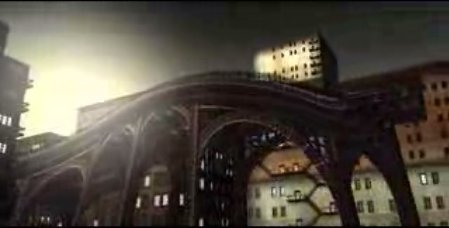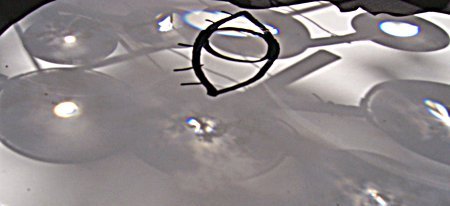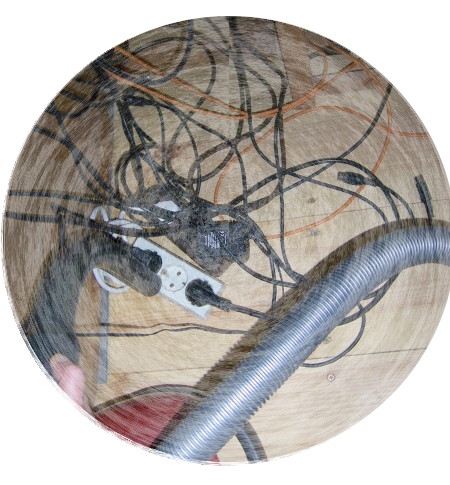
Rest of an Überraschungsei used for a pendulum
It is an interesting question how to approach big challenges. There exists the socalled Top-down and bottom-up design paradigma which is prevalent in computer programming but not only there. It appears also in math, where for example people study special examples (bottom-up)(like e.g. certain differential equations) as well as conceptional questions (top-down)(like e.g. construction of the number system via set theory). It is not only in programming useful to use both approaches. The top-down approach has often the advantage to detect conceptional connections, whereas the bottom-up approach has usually a better connection to applied problems. However sometimes also within the bottom-up approach unexpected connections may appear.
A funny connection between two more-or-less special applications is for example the fact that a discrete pendulum (a mathematical pendulum seen with a strobe light (and the classical counterpart of the quantum pendulum) can be identified with the movement of a ball in a billard with an elliptic shape (via certain coordinates, proof in my Ph.D. thesis). An ellipse is a generalized circle.
Another funny artistic mixture of these two concepts is the Oval with pendulum by Gabriel Orozco. (see also interview on pbs). I think I saw his elliptic billard table at the MAC in 2001, but I don’t remember wether it was part of a temporal exhibition or not and I couldn’t find too much information on the MAC online.
Currently Gabriel Orozco is busy with an equally interesting project. He and photographers Adam Broomberg + Oliver Chanarin and film maker Dustin Lynn are working on the first of several ‘mini missions’ to ‘ARTiculate™ some of the world’s most environmentally trashed regions with the end goal of then presenting work in response to their findings. (article on treehugger, the adventureecology website is a flash site so I cant link the information directly)
Last not least there exist of course the well-known connection between an ellipsoid or egg (3 dim analog of an ellipse) and a pendulum (see above image or e.g. this application for dowsing), but funnily a similar mixture of elliptic shapes and pendulum seems also to appear in astronomy. (?)



